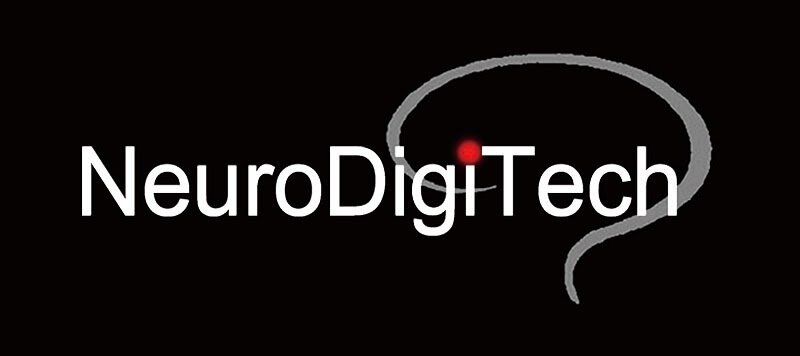Hematoxylin & Eosin (H&E) Stain:
The combination of hematoxylin and eosin stains (H & E, cf. Products, Cat. #NDT204 & NDT203) is one of the most widely used staining techniques in histology and histopathology. Hematoxylin imparts a blue color to the basophilic tissue elements including nuclear chromatin, while eosin gives various shades of red color to acidophilic tissue components such as collagen, cytosol, musculature and erythrocytes (cf. photo samples below).
H&E stain. This 5 µm paraffin section of rat intestine was stained with FD hematoxylin (blue) and FD eosin Y (red).
H&E stain. This 5 µm paraffin section of mouse heart was stained with FD hematoxylin (blue) and FD eosin Y (red).
H&E stain. This 20 µm cryostat section from the rat cortex of a stroke model was stained with FD hematoxylin (blue) and FD eosin Y (red). Note that damaged neurons are stained red in the cytoplasm and most of them have a condensed, irregular-shape and darkly stained nucleus.
Nissl Stain:
Several basophilic dyes can be used for Nissl staining. Thionin and azure II impart a deep blue color to Nissl substance of neurons and a pale blue color to the nuclear chromatin of both neuronal and non-neuronal cells. A similar staining pattern is also obtained with cresyl violet, which yields a violet color (cf. photo samples below).
Option 1: Nissl stain with thionin (cf. Product, Cat. NDT201)
Option 2: Nissl stain with cresyl violet (cf. Product, Cat. #NDT202)
Nissl stain. 20 µm cryostat section cut transversely from the rat spinal cord was stained with FD crysel violet.
Nissl stain. High magnification of the ventral horn from the same section as shown above.
Remark:
A quotation is required before placing an order.
Counterstain:
Counterstain is often used to reveal cells that are not labeled by the primary staining. For example, tissue sections that have been previously processed for immunohistochemistry or other labelings (e.g. TUNEL, ISNT) may be counterstained with histological dyes such as thionin (blue), neutral red (red), or methyl green (green) (cf. photo samples below).
Option 1: Counterstain with cresyl violet (cf. Products, Cat. #NDT202)
Option 2: Counterstain with eosin Y (cf. Products, Cat. #NDT203)
Option 3: Counterstain with hematoxylin (cf. Products, Cat. #NDT204)
Option 4: Counterstain with methyl green (cf. Products, Cat. #NDT205)
Option 5: Counterstain with neutral red (cf. Products, Cat. #NDT206)
Option 6: Counterstain with thionin (cf. Products, Cat. #NDT201)
Parvalbumin-immunostained section counterstained with thionin. 30 µm cryostat section through the medial entorhinal cortex of a rat that survived for 24 hrs after kainic acid administration, showing the preferential loss of neurons in layer III and relative resistance of parvalbumin neurons (for details, cf. J. Neurosci. 15:6301-6313, 1995).
Cytokeratin 18-immunostained section counterstained with cresyl violet. This 12 µm frozen section of the rat prostate was processed for Cytokeratin 18-immunoreactivity (brown) and was then counterstained with FD cresyl violet solution (cf. Products, Cat. #NDT202).
TUNEL-labeled section counterstained with methyl green. This 10 µm paraffin section was cut from a dorsal root ganglion of a mouse embryo (E17). The section was processed for detecting neuronal apoptosis (brown) with FD NeuroApop™ Kit (cf. Products, Cat. #NDT205) and then counterstained with methyl green.
CD31-immunostained section counterstained with hematoxylin. This 7 µm paraffin section of the mouse ear was processed for CD31-immunoreactivity (brown) and was then counterstained with FD hematoxylin solution (cf. Products, Cat. #NDT204).
Terms and Conditions
For quality assurance of our service, it is recommended that you discuss with us for preferred perfusion protocol and histology and/or immunolabeling protocols.
It is suggested that you use Gel-coated microscopic slides for tissue mounting and 0.17um-thick coverslips.
A 15% of the fee will be due upon authorization of the study; and the remaining fee will be due upon delivery of study results.
Progress of the service is contingent upon staining quality of tissues, operated by the independent contractor.
Should early termination occur, Neurodigitech will prorate the cost incurred and invoice the Sponsor. The first portion of the fee is non-refundable.










